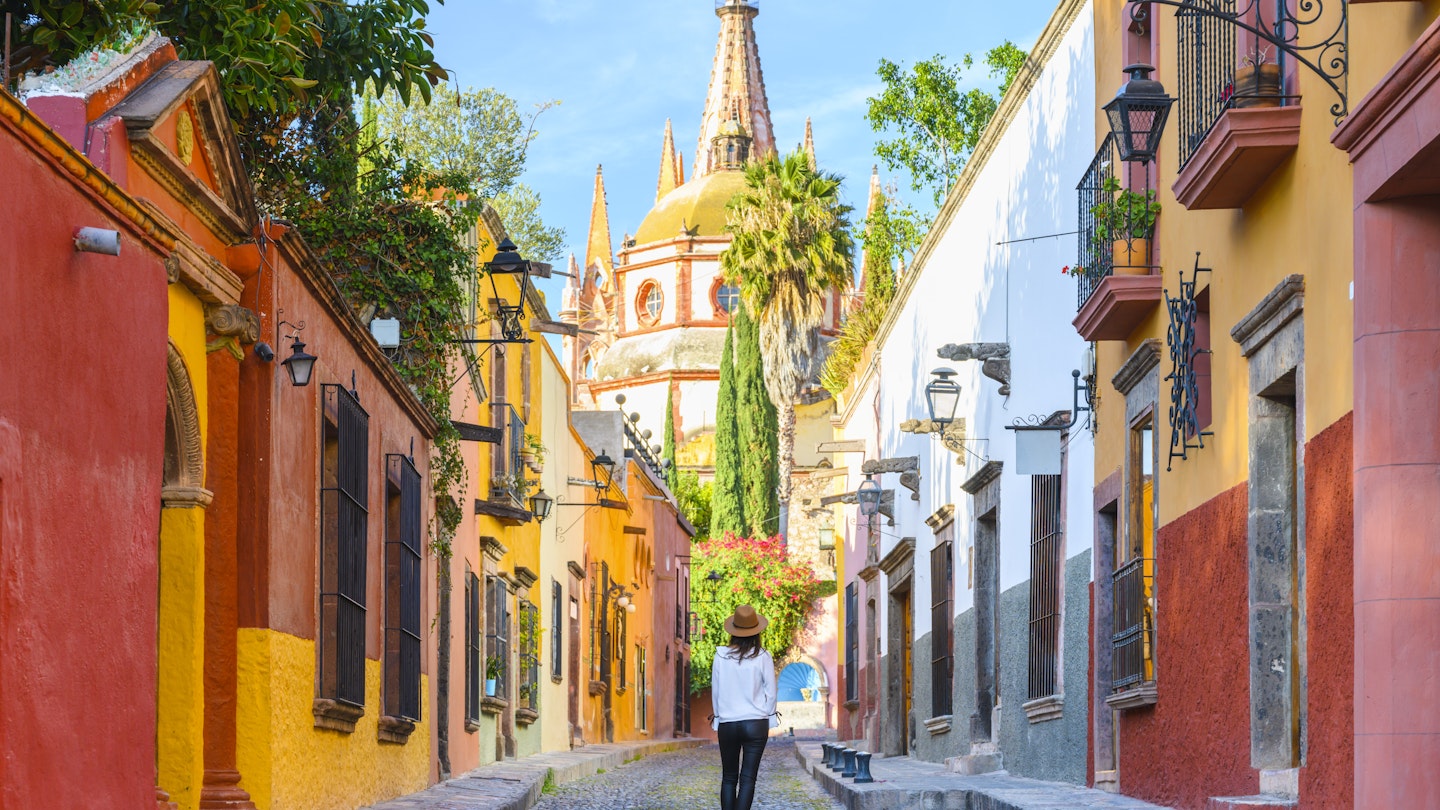Mexico is open for travel, but COVID-19 cases remain stubbornly high, particularly in tourist hot spots. Despite this, the country continues to welcome visitors with almost no testing and quarantine restrictions—though local restrictions are in place across individual states through a four-tiered traffic light system.
Can I travel to Mexico right now?
Mexico is accessible to travelers worldwide, and commercial flights are operating in and out of the country. Upon arrival, travelers are required to complete a health declaration form and scan the QR code generated on it.
Passengers arriving at Mexican airports may undergo health screenings, including temperature checks. Those displaying symptoms of COVID-19 could be asked to quarantine. Travelers entering by land may also be subject to health screenings. Although a COVID-19 test is not required for entry into Mexico, US travelers will need to take a COVID-19 test before flying home to the United States.
Will I have to quarantine when I arrive in Mexico?
Currently, anyone who shows signs of COVID-19 upon arrival may be returned to their country of origin or asked to voluntarily quarantine; however, it is not mandatory at this time. Moreover, the government strongly encourages preventive measures like social distancing and hand-washing, with masks required in certain areas of the country.
Where can I get a COVID-19 test in Mexico?
A negative viral COVID-19 test or documentation of recovery is required for anyone traveling by air to the US, and tests should be performed no more than three days before departure. Results for PCR and antigen tests are generally available within 72 hours in Mexico. Many hotels, resorts, and tour operators provide antigen tests for guests, while some airports have mobile COVID-19 testing stations available in departure halls. PCR tests can be conducted in hospitals and laboratories.
What COVID-19 restrictions apply in Mexico?
Mexico is one of the few countries that does not require mandatory testing or self-isolation upon arrival. Nevertheless, the Mexican government has implemented a four-tier color-coded traffic light system that corresponds to the level of COVID-19 transmission in each state. The operational status and restrictions depend on the contagion rate in the area you are visiting.
The traffic light system is updated every two weeks, reflecting the current COVID-19 transmission levels. It’s important to note that the classification of each area can change at short notice, especially in response to spikes in cases.
Green Level
Chiapas is currently the only state classified as green, allowing all non-essential businesses to operate without restrictions.
Yellow Level
States such as Baja California, Baja California Sur, Sinaloa, Chihuahua, Coahuila, Guanajuato, and Yucatán have achieved the yellow level status. Under this classification, markets, supermarkets, and golf courses can operate at 100% capacity, while hotels, restaurants, theaters, beaches, public parks, and other establishments typically operate at 50% to 70% capacity.
Orange Level
States like Sonora, Durango, Zacatecas, and Jalisco fall under the orange category. In these areas, non-essential businesses are allowed to operate at limited capacities. Specifically, hotels and restaurants can serve at 50% capacity, while markets can function at 75% capacity.
Red Level
States such as Colima, Guerrero, Hidalgo, and Nuevo Leon are classified under red level. Under this designation, only essential businesses and services may operate. Hotels are restricted to essential workers only, and public parks operate at 25% capacity, with residents encouraged to stay at home.
COVID-19 snapshot
This information is regularly updated to reflect the latest travel guidelines and health protocols in Mexico. Ensure you stay informed before making any travel plans to this beautiful country.




